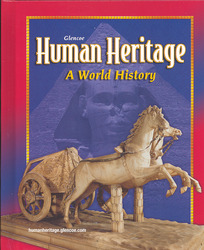Human Heritage: A World HistoryChapter 19:
The Irish and the Anglo-SaxonsWeb Activity Lesson Plans“The Book of Kells”Introduction
Students have read about how Christian monasteries served as literary centers during the Middle Ages. In this exercise, students will learn about the Book of Kells, one of the most famous books in the history of the world. They will also learn about the scribes and artists—Irish monks that lived in a monastery off the west coast of Scotland—who created it. Lesson Description
Students will use information from the Book of Kells Web site to learn about illuminated medieval manuscripts. Students will browse the site to learn about the Book of Kells and view actual pages from the manuscript. They will then answer four questions and apply this information by copying and illuminating passages of their choice. Instruction Objectives
- Students will be able to identify the characteristics of the Book of Kells and how monks created it as a medieval artistic expression.
- Students will use this knowledge to copy and illustrate passages of their choice.
Student Web Activity Answers
- The Book of Kells contains 680 pages. Only two of the pages do not have ornamentation.
- In A.D. 1006 the Book of Kells was stolen for its cover of gold, inset with precious stones. Months later it was found buried under sods of earth in a bog, without its cover.
- The two words that appear on the page are "autem," meaning "now," and "generatio," meaning "the birth."
- A recurring motif in the Book of Kells is a group of onlookers, as seen in the lower right-hand side of the Virgin and Child page. They function as a visual prompt to guide the reader's eye to the facing page.
- Students' illuminations will vary.
 | 




